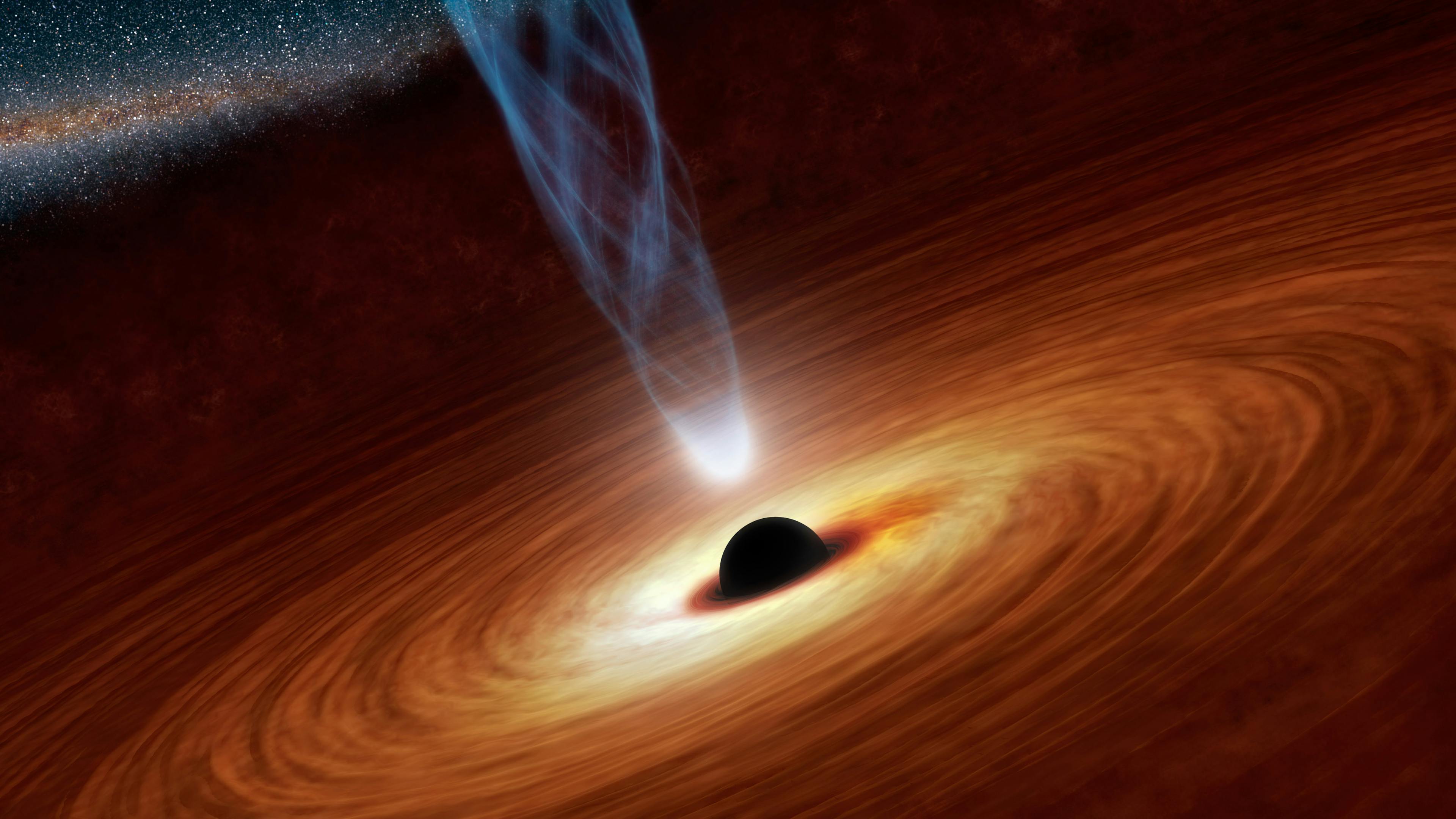Is the supermassive black hole at the centre of the Milky Way going to eat the Earth?
Ross, UK
No, the Earth is not in any danger from the supermassive black hole (SMBH) at the centre of the Milky Way.
The SMBH, known as Sagittarius A*, is not going to suck us in. Black holes are often seen as cosmic plug holes but they are often tamer than portrayed.

This image from NASA’s Chandra X-ray Observatory shows the centre of our Galaxy, with a supermassive black hole known as Sagittarius A* (Sgr A* for short) in the centre. Using intermittent observations over several years, Chandra has detected X-ray flares about once a day from Sgr A*. Credits: X-ray: NASA/CXC/MIT/F. Baganoff et al.; Illustrations: NASA/CXC/M.Weiss
Objects fall into the black hole following an accretion disc, a ring of material which surrounds a massive object. The accretion disc is an unstable orbit, and things in it eventually spiral down. Gravity and general relativity effects create that instability.
The Milky Way is not Sagittarius A* accretion disc. There are plenty of stable orbits around a black hole, and the further one is from a black hole the more stable an orbit is.
When material falls into a black hole, the BH start emitting powerful jets. These jets last for as long as the BH is feeding. When it’s not feeding, the BH stay quiet. Sagittarius A* is very quiet, and that’s a good thing. Jets from a supermassive black hole generates galaxy-wide winds that can easily snuff out stars.
So, supermassive black holes are wonderful terrifying giants which are capable of completely changing the future of a galaxy.. But for now we are safe.
